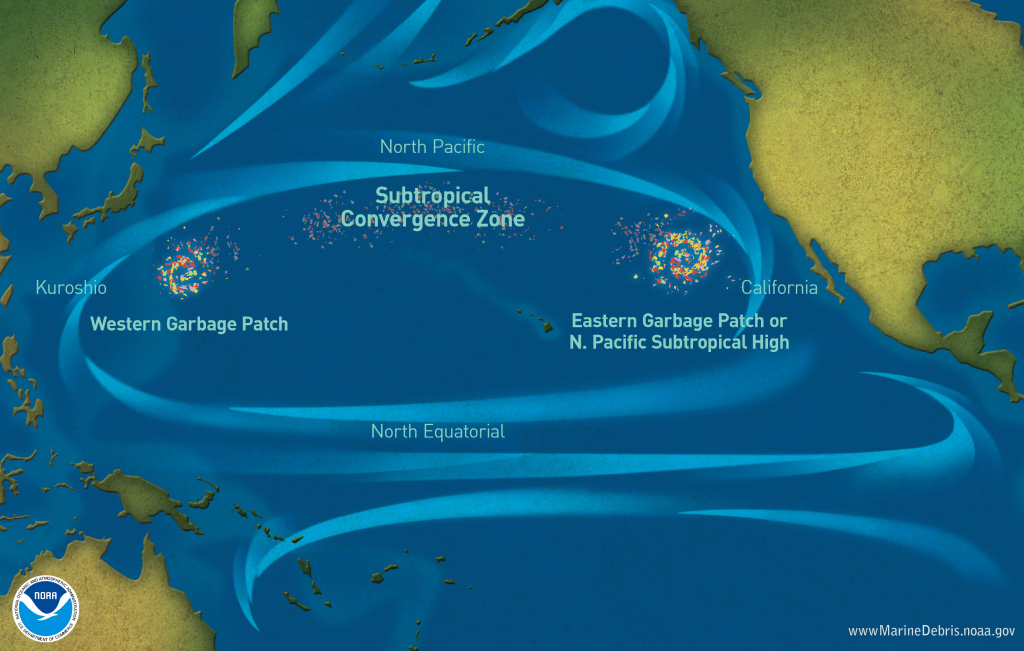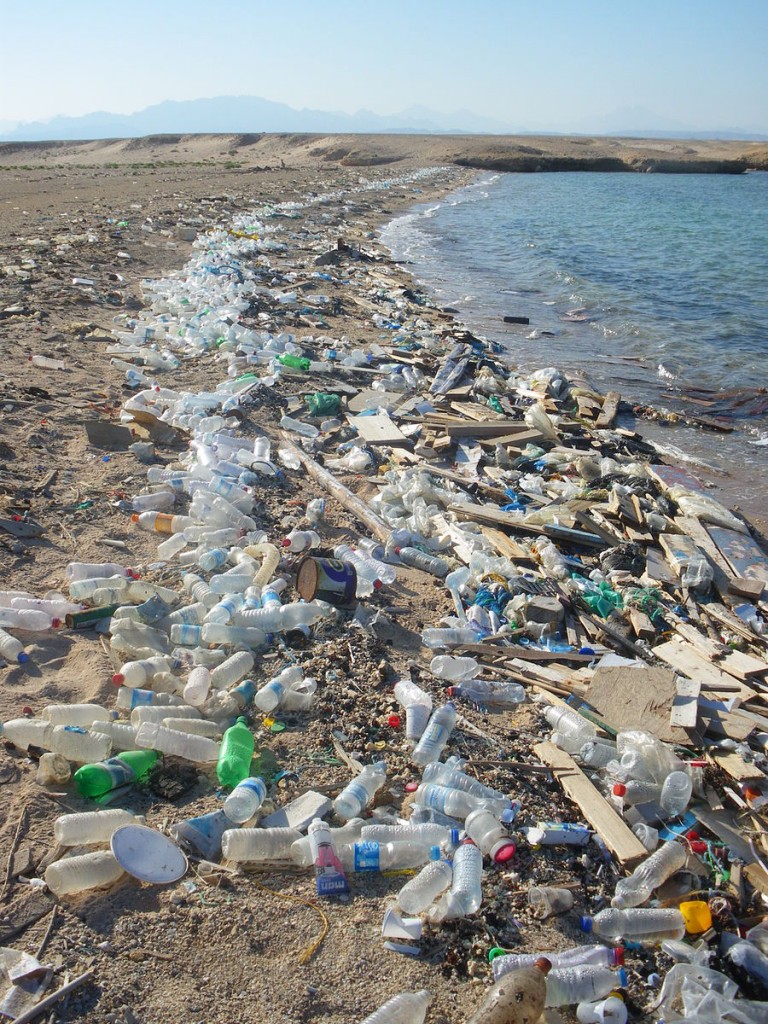Imagine yourself on a beach, cocktail in hand, sun shining down, and a warm breeze ruffling your hair. You walk down to the ocean expecting beautiful, crystal-clear water, but instead you see plastic debris washing up onto the beach. In fact, as far as you can see, the ocean is filled with plastic garbage ranging from plastic bottles and containers, to tiny confetti-like pieces of debris. You decide not to go swimming.
Although our beaches are not yet in this state, this could soon be a reality due to the Great Pacific Garbage Patch (GPGP). The GPGP consists of two separate garbage patches known as the Western Garbage Patch (near Asia), and the Eastern Garbage Patch (near the USA). Central to the GPGP is the Subtropical Convergence Zone. This zone is where warm water from the south meets cooler water from the north, creating a current which ferries plastic debris between the two large garbage patches.
It is difficult for scientists to determine the size of the GPGP. One complication is that there is not yet a standard for what quantity of plastic debris is considered “normal” or “elevated”. Further complications arise from the fact that not all plastic debris floats on the surface of the water; most of it “hovers” a few centimetres to a few metres below the surface. As a result of these complications, predictions for the size of the Eastern Garbage Patch alone range from approximately the size of Texas, to twice the size of the entire USA. Either way, this is simply a measurement of the area, and does not include the depth to which the garbage patch extends. Scientists predict that 70% of the debris actually sinks to the bottom of the ocean, so the amount of debris in the ocean is much larger than what we see.
This massive amount of debris presents a series of issues for wildlife. Sea creatures can become tangled in ropes and nets, causing them to drown, and many animals mistake small, colourful pieces of plastic for food, and then die from ruptured organs or starvation. A prominent case is that of the albatrosses, as shown in the video by IsowerCommunity below.

There are solutions that will begin to reduce the amount of garbage in the ocean, but this will take years, and it will do little to alleviate the problem if people continue to make the issue worse. So what can you do to help? Try to use less plastic. A single water bottle can take 450 years to decompose, and the USA alone uses over 50 billion plastic water bottles a year. Also, try to recycle whenever possible, and never litter. The use of plastics is so deeply ingrained in North American society that it is difficult to find non-plastic substitutes for everything we consume. However, if we do not find alternatives soon, we may end up wading in an ocean of plastic.
– Danya


